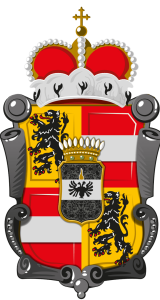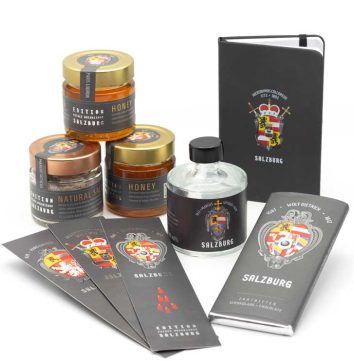Fürst Erzbischöfe prägten die Mozartstadt
Nehmen Sie jetzt ein Stück der Geschichte Salzburgs mit nach Hause!
Fürstliche Baumeister des barocken Salzburgs
Die Stadt Salzburg ist immer eine Reise wert. Jährlich besuchen 11 Millionen Touristen aus aller Welt diese einmalige Stadt. Zahlreiche touristische Magnete ziehen die Besucher an, darunter Wolfgang Amadeus Mozart, Sound of Music oder die einmalige Architektur. Besonders Salzburgs Altstadt mit vielen Kirchen, italienisch anmutenden Plätzen und engen Gassen begeistert die Besucher immer aufs Neue.

Hauptverantwortlich für das einzigartige Erscheinungsbild der Stadt sind die Fürst Erzbischöfe, die das Erzbistum über 1100 Jahre regierten. Sie waren die Baumeister und Gestalter des barocken Salzburg. Die Landesfürsten vereinten politisches Geschick mit Machtbewusstsein und waren die geistlichen und weltlichen Herrscher jener Zeit. Diese fünf Fürst Erzbischöfe prägten die Mozartstadt in ihrer Amtszeit besonders:
- Leonhard Keutschach: 1495–1510
- Wolf Dietrich (siehe Bild): 1587–1612
- Marcus Sitticus: 1612–1619
- Paris Lodron: 1619–1653
- Hieronymus Colloredo: 1772–1803
Ein Stück der Geschichte Salzburgs als Souvenir
Jetzt können Sie ein Stück der reichen Historie in Form hochqualitativer Produkte aus der Region mit nach Hause nehmen! Die EDITION PRINCE ARCHBISHOP SALZBURG rückt die wichtigsten Fürst Erzbischöfe in den Fokus – und zwar mit ihren historischen Wappen. Sie zieren die hochwertigen Souvenirartikel.
Das Design der Souvenirs (u.a. Schokolade, Honig, Salz und Edelbrand aus Salzburg) ist edel und reduziert. Hochwertige Silberapplikationen und elegante Optik unterstreichen die hohe Qualität der Produkte. Die Lebensmittel etwa werden ausschließlich in Salzburg und Umgebung nach strengen Qualitätskriterien hergestellt.
Sichern Sie sich jetzt für zuhause oder als Geschenk für eine besondere Gelegenheit das Salzburg Souvenir mit Geschichte – die EDITION PRINCE ARCHBISHOP SALZBURG!







